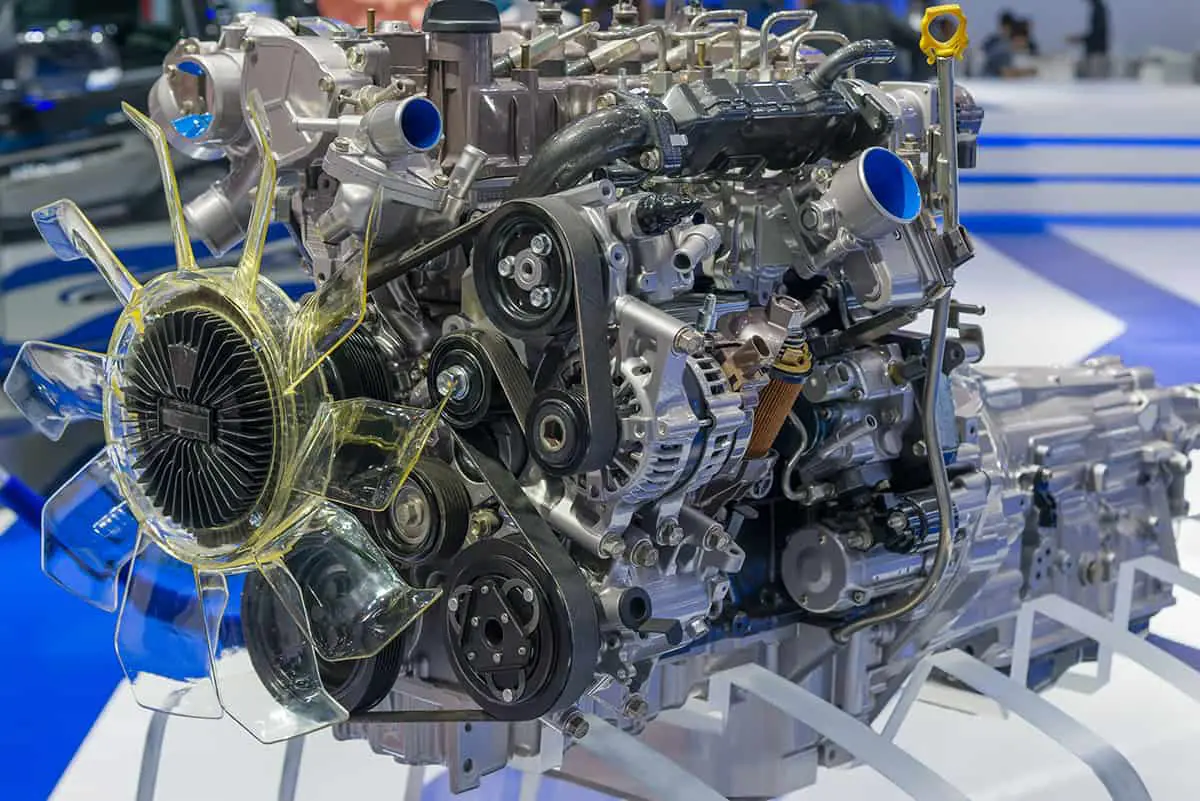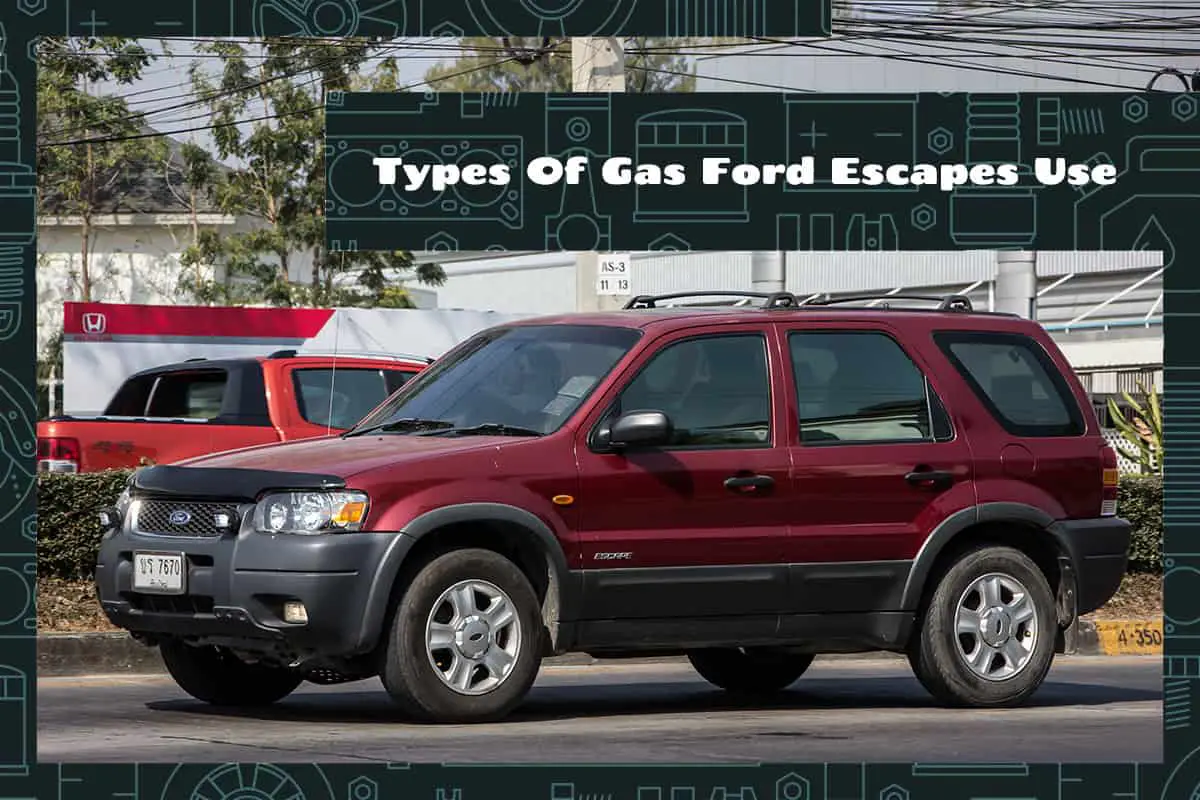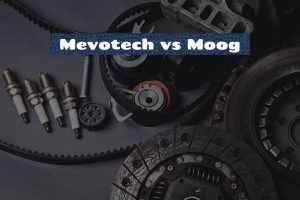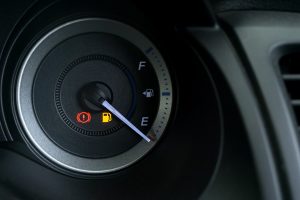Driving a Ford Escape comes with the satisfaction of owning a versatile, reliable, and stylish SUV. However, to get the most out of your vehicle, it’s important to know the right type of fuel to use.
The Ford Escape typically uses regular unleaded gasoline (87 octane), but some models can also run on E85 ethanol blend or premium unleaded gasoline (91 octane).
In this guide, we’ll provide a comprehensive outline of the various types of gas that Ford Escapes use, including conventional gasoline, flex-fuel, EcoBoost, hybrid, and plug-in hybrid models.
Conventional Gasoline Models
Ford Escape models that run on regular gas are conventional gasoline models. These vehicles use two main types of gas—regular unleaded and premium unleaded.
Regular unleaded gasoline (87 octane)
Regular unleaded gasoline with an octane rating of 87 is the most common and widely used type of fuel for vehicles, including many Ford Escape models. This gasoline type provides a good balance of performance, efficiency, and affordability for most drivers. An octane rating of 87 indicates the fuel’s ability to resist knocking or pinging during combustion, which is essential for maintaining engine performance and longevity.
Using regular unleaded gasoline (87 octane) in your Ford Escape ensures that the engine runs smoothly and efficiently, preventing potential damage from lower-quality fuels.
Additionally, this type of fuel is typically less expensive than premium gasoline, helping you save money at the pump. Since regular unleaded gasoline is readily available at most gas stations, you can easily find and refuel your vehicle with this fuel type.
Premium unleaded gasoline (91 octane)
Premium unleaded gas has a higher octane rating than regular gas. Some people think using premium gas makes their car run better, but that’s not always true. For most Ford Escapes, premium gas doesn’t offer extra benefits.
However, there are a few models that need premium gas for better performance. Make sure to check your owner’s manual to see if your car requires it.
Flex-Fuel Models

Flex-fuel vehicles, or FFVs, are cars that can use more than one type of fuel. Ford Escape flex-fuel models can run on regular gas or a special fuel called E85 ethanol blend.
E85 ethanol blend
E85 is a mix of 85% ethanol and 15% gasoline. Ethanol comes from plants like corn, so using E85 can help the environment. It also has a high octane rating, which can boost your car’s performance. However, E85 may not be available at all gas stations, and it might be a bit more expensive.
Blends between E10 and E85
Some Ford Escapes can use fuel blends between E10 (10% ethanol, 90% gas) and E85. These blends have different amounts of ethanol and gasoline. You can choose the right blend based on factors like price, availability, and your car’s needs.
EcoBoost Engine Technology
EcoBoost is a special engine technology that Ford uses to make cars more fuel-efficient and powerful. Ford Escapes with EcoBoost engines have turbochargers, which help the engine perform better without using more gas.
Benefits of EcoBoost for fuel efficiency
EcoBoost engines offer several benefits when it comes to fuel efficiency. Designed by Ford to enhance performance without sacrificing fuel economy, these engines combine advanced technologies to optimize efficiency in various driving conditions. Here are some key benefits of EcoBoost engines for fuel efficiency:
- Turbocharging—EcoBoost engines utilize turbochargers to force more air into the engine, allowing for a more powerful combustion process. This results in increased power output without increasing the engine’s size or using more fuel.
- Direct Fuel Injection—These engines feature direct fuel injection, which delivers fuel directly into the combustion chamber. This precise fuel delivery system ensures a more efficient burn, reducing fuel waste and improving overall efficiency.
- Smaller Engine Size—EcoBoost engines are often smaller than traditional engines with similar power outputs. The reduced size and weight of the engine contribute to better fuel economy, as the vehicle requires less energy to move.
- Variable Valve Timing—This technology adjusts the timing of the engine’s intake and exhaust valves to optimize performance and efficiency in different driving conditions. This results in improved fuel economy and reduced emissions.
- Reduced Emissions—EcoBoost engines produce fewer greenhouse gas emissions, making them more environmentally friendly compared to traditional engines with similar power output.
Gasoline types compatible with EcoBoost
EcoBoost engines are designed to work well with different gasoline types, giving drivers flexibility when it comes to fuel choices. The most common gasoline type compatible with EcoBoost engines is regular unleaded gasoline (87 octane). This fuel provides an ideal balance of performance and cost-effectiveness, ensuring that your EcoBoost engine runs smoothly and efficiently.
However, some EcoBoost-equipped Ford Escape models may benefit from using premium unleaded gasoline (91 octane), especially when driving under demanding conditions, such as towing or carrying heavy loads. Premium gasoline can improve engine performance and provide smoother acceleration in these situations. It is important to check your owner’s manual for specific recommendations on gasoline types for your particular model.
Hybrid Models
Ford Escape Hybrid models use a mix of gas and electric power to save fuel and reduce pollution. These cars have a gas engine and an electric motor, which work together to provide a smooth driving experience.
Regular unleaded gasoline for hybrids
Ford Escape Hybrids use regular unleaded gasoline (87 octane) just like conventional models. The gas engine works with the electric motor to save fuel and improve efficiency.
Fuel economy and efficiency improvements
Hybrid models are more fuel-efficient than traditional gas-powered cars. They use both the gas engine and electric motor to get the best performance while using less fuel. This saves you money and is better for the environment.
Plug-In Hybrid Models
Ford Escape Plug-In Hybrid models are a special type of hybrid vehicle. They use both gas and electricity to power the car, but you can also charge the battery from an outlet, like charging a phone.
Gasoline-electric powertrain
The plug-in hybrid has a gas engine and an electric motor, just like a regular hybrid. The main difference is that you can charge the battery from an electrical source, which lets you drive using only electric power for short distances.
Regular unleaded gasoline for plug-in hybrids
Ford Escape Plug-In Hybrids use regular unleaded gasoline (87 octane) (PDF). The gas engine works together with the electric motor to save fuel and improve efficiency.
Charging and electric-only driving
You can charge the battery of a plug-in hybrid at home or at public charging stations. This allows you to drive using only electric power for short trips, which can save even more fuel and reduce pollution.
FAQs
1. Can I switch between different types of gas in my Ford Escape?
If your Ford Escape is a flex-fuel model, you can switch between regular unleaded gasoline and E85 ethanol blend without any problems. However, if your Escape isn’t designed for flex-fuel, stick to the recommended fuel type in your owner’s manual.
2. How do I know if my Ford Escape is a flex-fuel vehicle?
To find out if your Ford Escape is a flex-fuel vehicle, check your owner’s manual or look for a label near the gas cap that says “E85” or “Flex-Fuel.” You can also check the vehicle identification number (VIN) and contact your local Ford dealership for more information.
3. What happens if I use the wrong type of gas in my Ford Escape?
Using the wrong type of gas in your Ford Escape can cause poor performance, reduced fuel efficiency, and engine damage over time. If you accidentally put the wrong fuel in your car, it’s best to consult your owner’s manual or contact a mechanic for advice on how to proceed.





